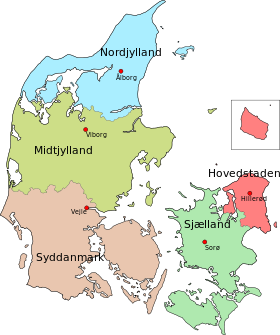Transport to and from Denmark
Together with our partners we offer daily departures to and from Denmark Whether it’s pallets, groupage or full loads. Nothing is too big or too small for NWT Sweden AB.
Transportation is done mostly with Danish drivers / hauliers with extensive experience providing high service and quality level
Complete loads
Daily departures
Groupage and part loads
Departures every day to and from the Småland region in SE and Denmark
Lead time: 1 – 3 days. The lead time is measured in working days.
Terminal locations
In Sweden: Anderstorp
In Denmark: Aarhus and Copenhagen
Generally
1 loading meter = 2000 kg
1 cubic meter = 333 kg
All assignments are carried out according NSAB2000 excluding §§ 6, 20 and 27 C3
Price inquery / booking
Phone: +46 (0)371 18920
Mail: bokning@nwtsweden.se


enmark, Danish: Danmark, is a Scandinavian country in Europe. The southernmost and smallest of the Nordic countries, it is south-west of Sweden and south of Norway, and bordered to the south by Germany. The Kingdom of Denmark is a sovereign state that comprises Denmark proper and two autonomous constituent countries in the North Atlantic Ocean: the Faroe Islands and Greenland. Denmark has an area of 42,924 square kilometres (16,573 sq mi), and a population of 5.7 million. The country consists of a peninsula, Jutland, and an archipelago of 443 named islands, of which around 70 are inhabited, with Zealand, the largest and featuring the capital and largest city Copenhagen. The islands are characterised by flat, arable land and sandy coasts, low elevation and a temperate climate.
The unified kingdom of Denmark emerged in the 10th century as a proficient seafaring nation in the struggle for control of the Baltic Sea. Denmark, Sweden and Norway were ruled together under the Kalmar Union, established in 1397 and ending with Swedish secession in 1523. Denmark and Norway remained under the same monarch until outside forces dissolved the union in 1814. The deterioration of the Kingdom of Norway, caused by the Black Death, made it possible for Denmark to inherit an expansive colonial empire from this union—of which the Faroe Islands and Greenland are remnants. Beginning in the 17th century, there were several cessions of territory; these culminated in the 1830s with a surge of nationalist movements, which were defeated in the 1864 Second Schleswig War. Denmark remained neutral during World War I. In April 1940, a German invasion saw brief military skirmishes while the Danish resistance movement was active from 1943 until the German surrender in May 1945. An industrialised exporter of agricultural produce in the second half of the 19th century, Denmark introduced social and labour-market reforms in the early 20th century that created the basis for the present welfare state model with a highly developed mixed economy.
The Constitution of Denmark was signed on 5 June 1849, ending the absolute monarchy which had begun in 1660. It establishes a constitutional monarchy—organised as a parliamentary democracy. The government and national parliament are seated in Copenhagen, the nation’s capital, largest city and main commercial centre. Denmark exercises hegemonic influence in the Danish Realm, devolving powers to handle internal affairs. Home rule was established in the Faroe Islands in 1948; in Greenland home rule was established in 1979 and further autonomy in 2009. Denmark became a member of the European Economic Community (now the EU) in 1973, maintaining certain opt-outs; it retains its own currency, the krone. It is among the founding members of NATO, the Nordic Council, the OECD, OSCE, and the United Nations; it is also part of the Schengen Area.
